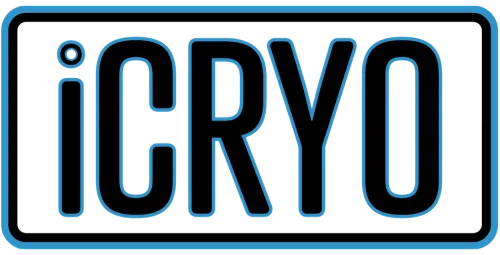ReGEN THERAPY
Regenerative therapy can refer to treatments that help the body heal and regenerate tissues at a cellular level. These therapies use biological components like stem cells, exosomes, peptides, and growth factors to accelerate healing, reduce inflammation, and restore function.
Regenerative therapy can offer numerous benefits, including faster recovery from injuries and surgeries, reduced inflammation and pain, enhanced skin health, and improved overall wellness and longevity.
What is a stem cell?
A mesenchymal stem cell is a primitive cell with the ability to:

A mesenchymal stem cell (MSC) can develop into a variety of different cell types. These cells are found in several tissues, including bone marrow, fat, and umbilical cord tissue. They are considered "multipotent," meaning they can become different kinds of cells like bone cells, cartilage cells, muscle cells, and fat cells.
MSCs play a key role in regenerative medicine because they can help repair and regenerate damaged tissues. They are often used in therapies to treat conditions like joint injuries, arthritis, and even certain skin issues. They also have anti-inflammatory properties and can support healing by promoting tissue repair and reducing scar tissue formation.
In short, mesenchymal stem cells are like "repair workers" for the body, helping to regenerate and fix damaged or worn-out tissues.
Mesenchymal Stem Cell (MSC) FAQ
What are mesenchymal stem cells (MSCs), and how do they work in regenerative medicine?
Mesenchymal stem cells (MSCs) are multipotent stem cells found in bone marrow, adipose tissue, and umbilical cord tissue. They have the ability to differentiate into various cell types, including bone, cartilage, and muscle cells. In regenerative medicine, MSCs help repair damaged tissues, reduce inflammation, and modulate immune responses to promote healing.
What conditions can MSC therapy help with?
MSC therapy is used for a wide range of regenerative applications, making it a versatile option for healing and recovery. It is commonly utilized for joint and muscle injuries, promoting tissue repair and reducing inflammation in conditions such as arthritis, tendonitis, and cartilage damage. Additionally, MSCs play a crucial role in modulating the immune system, making them effective for managing chronic inflammation and autoimmune disorders. In the field of neurology, MSC therapy shows promise in treating neurodegenerative diseases by supporting nerve regeneration. Beyond internal health, MSCs are also used in aesthetic and anti-aging treatments, enhancing skin repair, boosting collagen production, and promoting overall tissue rejuvenation.
How is MSC therapy administered?
Exosomes therapy can be delivered into the bloodstream through IV therapy, by localized injection, or topically in advanced skincare treatments.
How do MSCs compare to exosome therapy?
MSCs and exosomes both play essential roles in regenerative medicine, but they function in distinct ways. MSCs are live stem cells that have the ability to differentiate into various tissue types, actively repairing and replacing damaged cells. On the other hand, exosomes are the signaling molecules released by stem cells that communicate with other cells, enhancing regeneration without the need to introduce new cells into the body. While MSCs are commonly used for direct tissue regeneration, exosomes are primarily employed for their ability to facilitate cellular communication and reduce inflammation, supporting the body’s natural healing processes.
Is it safe to receive MSCs from another person?
Using umbilical cord-derived stem cells (UC-MSCs) for therapeutic purposes can be safe as they are often seen as a promising source for regenerative medicine because they have a high potential for differentiation and minimal risk of immune rejection.
Is MSC therapy safe?
MSC therapy is generally considered safe when sourced from high-quality, compliant providers. Since MSCs have immunomodulatory properties, they pose a low risk of rejection. However, proper sourcing and quality control are crucial to ensuring efficacy and safety.
Can MSC therapy be combined with other treatments?
Absolutely! MSC therapy can significantly enhance the effects of other regenerative treatments. When combined with Hyperbaric Oxygen Therapy, MSCs improve oxygen delivery to tissues, which accelerates healing and promotes tissue repair. Additionally, pairing MSC therapy with Cryotherapy and Red Light Therapy can help reduce inflammation and support cellular regeneration, further optimizing the body’s natural healing processes.
How soon can I see results from MSC therapy?
Results vary based on the treatment area and individual health factors. Some patients notice improvements within weeks, while others experience gradual progress over several months as stem cells continue to repair damaged tissues.
How do I know if MSC therapy is right for me?
If you’re looking to accelerate healing, reduce inflammation, or improve overall wellness, MSC therapy may be an excellent option.

I’ve dealt with chronic back pain for years, and it was starting to take over my life. Simple things like getting out of bed or playing with my kids became a struggle. I didn’t want to rely on painkillers any more and surgery was a last resort option for me, so I tried the Wolverine Regen therapy. Within weeks, I noticed less stiffness, and over time, the pain became more manageable. Now, I’m moving better, sleeping better, and feeling stronger than I have in years. For the first time, I truly feel like my body is actually healing.
-Mark S.
What is an exosome?
Exosomes are tiny extracellular vesicles (EV) (sac-like structures) that MSCs release into the bloodstream and surrounding tissues. These exosomes carry important biological signals, including proteins, lipids, RNA, and growth factors, which help regulate various processes in the body, such as tissue repair, immune modulation, and reducing inflammation.
When MSCs are used in regenerative therapies, their exosomes are often considered to play a significant role in promoting healing and regeneration. The exosomes act as messengers, communicating with other cells to promote recovery, reduce inflammation, and support the body's natural repair processes.
MSCs not only have regenerative potential themselves but also enhance healing by releasing exosomes that help guide and stimulate other cells in the body.

Instead of going on a trip for our 20th wedding anniversary, my husband and I did regen therapy. We didn't feel anything right away after the regen therapy but within the first few weeks both of our energy levels picked up as well as some other things (wink, wink). I haven't felt this good since I had my babies and I don't know if its placebo or not but my skin is definitely feeling better.
-Terra P.
Exosome FAQ
What are exosomes?
Exosomes are small extracellular vesicles (30-150 nm in diameter) released by various cell types into the extracellular environment. They play a crucial role in cell communication and transport essential molecules, including proteins, lipids, and RNA, between cells.
What conditions can exosomes help with?
Exosomes can help accelerate healing and reduce inflammation in conditions like arthritis and tendonitis; promote skin rejuvenation, collagen production, and scar healing; repair nerve damage and supporting brain health; regulate immune function and reduce systemic inflammation.
How is exosome therapy administered?
Exosomes therapy can be delivered into the bloodstream through IV therapy, by localized injection, or topically in advanced skincare treatments.
How do exosomes compare to stem cell therapy?
Exosomes are derived from stem cells and act as the messengers that drive healing, without the need to inject actual stem cells. When stem cells are injected into the body, they produce and release exosomes tailored to the specific needs of individual cells, enhancing their effectiveness in supporting cellular repair and function
Is exosome therapy safe?
Yes, when sourced from reputable providers, exosome therapy is considered safe and well-tolerated. Since exosomes contain no DNA, they do not pose a risk of rejection or tumor formation. However, it's essential to use high-quality, lab-tested exosomes from compliant vendors.
Can exosome therapy be combined with other treatments?
Exosomes can enhance the effects of other regenerative treatments, making them a powerful addition to a wellness and recovery plan. When combined with hyperbaric oxygen therapy, exosomes help improve oxygenation and optimize tissue repair. Pairing exosome therapy with cryotherapy and red light therapy further reduces inflammation and accelerates cellular regeneration, maximizing the body's natural healing potential.
How soon can I see results from exosome therapy?
Results vary depending on the treatment area and individual health factors. Some people experience improvements within days, while others may see gradual progress over weeks or months as cellular regeneration takes place.
How do I know if exosome therapy is right for me?
If you’re looking to enhance recovery, reduce inflammation, avoid surgery or improve overall wellness, exosome therapy may be a great option.
TESTIMONIALS
SKIN HEALTH
"I struggled with dry, saggy skin for years, no matter how many creams or serums I tried. After starting red light therapy, hydrating IV treatments and cryo facials, my skin became noticeably brighter, smoother, and more vibrant. Friends even started asking what I was doing differently! I feel great about myself, sleep better and have so much more energy throughout the day."
-Nicole R.

LOW ENERGY
"I started coming because I was always tired, stressed, and dealing with constant aches. After just a few sessions of cryotherapy and red light therapy, I started noticing a huge difference. My energy came back, my sleep improved, and I finally started to feel like myself again. The team created a plan that fit my goals, and now I feel stronger, happier, and more confident."
-Sarah G.

WEIGHT LOSS
"I’m 55, and losing weight had become so frustrating. I started GLP-1's after hearing good things, and it ended up being exactly what I needed. The weight started coming off, and for the first time in a long time, I felt hopeful. Once I got down to my ideal weight, I did a series of Neveskin sessions that helped tighten some of my loose areas. It was the perfect finishing touch. Now I feel more confident in my clothes — and more like myself again."
-Regina M.

NAD+
"I didn’t realize how much I’d been running on empty until I tried NAD+. I was dealing with low energy, brain fog, and just felt off. After a few sessions, I started feeling sharper, more focused, and like I had my edge back. It’s become part of my routine now, and I can honestly say I feel better at 50 than I did at 40."
-Bradley D.

EMSCULPT NEO
"Thank you iCRYO. I did five sessions of the Emsculpt Neo (they had the best pricing) after struggling to rebuild my core strength post-pregnancy. No matter how much I worked out, I just couldn’t get my stomach to tighten up. After the treatments, I started to make some progress. My abs felt stronger, my waist looked flatter, and my clothes started to fit better. My gym workouts got way better too.

TESTIMONIALS
SKIN HEALTH
"I struggled with dry, saggy skin for years, no matter how many creams or serums I tried. After starting red light therapy, hydrating IV treatments and cryo facials, my skin became noticeably brighter, smoother, and more vibrant. Friends even started asking what I was doing differently! I feel great about myself, sleep better and have so much more energy throughout the day."
-Nicole R.

LOW ENERGY
"I started coming because I was always tired, stressed, and dealing with constant aches. After just a few sessions of cryotherapy and red light therapy, I started noticing a huge difference. My energy came back, my sleep improved, and I finally started to feel like myself again. The team created a plan that fit my goals, and now I feel stronger, happier, and more confident."
-Sarah G.

WEIGHT LOSS
"I’m 55, and losing weight had become so frustrating. I started GLP-1's after hearing good things, and it ended up being exactly what I needed. The weight started coming off, and for the first time in a long time, I felt hopeful. Once I got down to my ideal weight, I did a series of Neveskin sessions that helped tighten some of my loose areas. It was the perfect finishing touch. Now I feel more confident in my clothes — and more like myself again."
-Regina M.

NAD+
"I didn’t realize how much I’d been running on empty until I tried NAD+. I was dealing with low energy, brain fog, and just felt off. After a few sessions, I started feeling sharper, more focused, and like I had my edge back. It’s become part of my routine now, and I can honestly say I feel better at 50 than I did at 40."
-Bradley D.

EMSCULPT NEO
"Thank you iCRYO. I did five sessions of the Emsculpt Neo (they had the best pricing) after struggling to rebuild my core strength post-pregnancy. No matter how much I worked out, I just couldn’t get my stomach to tighten up. After the treatments, I started to make some progress. My abs felt stronger, my waist looked flatter, and my clothes started to fit better. My gym workouts got way better too.
-Erin L.

Your Wellness Destination in
Chandler, AZ
At iCRYO Chandler, we combine cutting edge wellness technology with personalized care to help you feel stronger, healthier, and more confident in your body while effectively managing pain. Every service is backed by science and designed to deliver real results. Book your appointment today and discover what’s possible when wellness meets innovation.
Wellness

CONTACT US
2510 W Chandler Blvd, Suite 5
Chandler, AZ 85224
BUSINESS HOURS
Mon - Fri 8:00am -7:00pm
Sat - 9:00am - 4:00pm
Sun - 9:00am - 3:00pm
2025 | Chandler Wellness & Recovery. All rights reserved.




